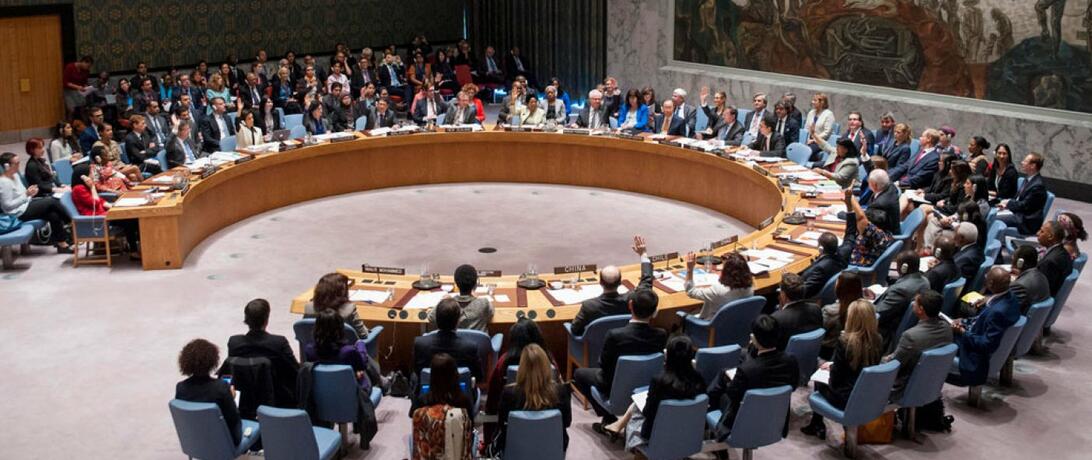
On World Day of Trafficking in Persons, how can the Women, Peace and Security and human trafficking agendas work together for better human rights and international security?
Although separate agendas, human trafficking and Women, Peace and Security (WPS) are often treated as two parts of the same puzzle. While human trafficking and WPS are not the same, they do share a few similarities that are worth noting to mark the World Day of Trafficking in Persons.
First, WPS and human trafficking are two issues that fall into the categories of both human rights and hard security. Second, there is a growing body of Security Council resolutions and state national action plans (NAPs) that draw a connection between these two agendas that activists can capitalize on. Finally, while not all victims of human trafficking are women, the amplification of women’s voices emphasized by WPS is also helpful in the realm of human trafficking, where the amplification of survivor voices is critical to success.
WPS is couched in the language and commitments of the United Nations Security Council. Starting with the adoption of Resolution 1325 in 2000, the agenda “reaffirms the important role of women in the prevention and resolution of conflicts, peace negotiations, peace-building, peacekeeping, humanitarian response and in post-conflict reconstruction.” Stemming from an urgent need to amplify the voices of women in these areas, the agenda has four pillars: protection, conflict prevention, participation, and gender mainstreaming. Urging the equality and inclusion of women, WPS is a security-based solution to global conflict.
As noted by Christine Chinkin at the London School of Economics and Political Science, human trafficking has a different history, one that is steeped in both human rights and criminal law. However, this language initially came about as part of a campaign to end cross-border prostitution, which is a separate issue from coerced sexual or physical labor. The 1949 Convention for the Suppression of Traffic in Persons and of the Exploitation of the Prostitution of Others unfortunately moralized prostitution as a threat to human dignity and welfare but did not recognize victims of human trafficking as agents of change, only as vulnerable to a particular type of evil. Thirty years later, the 1979 Convention on the Elimination of Discrimination Against Women (CEDAW) brought human trafficking even more into the realm of human rights, although still with a focus on violence against women as opposed to women and other victims of human trafficking as agents of change. Finally, the 1993 World Conference on Human Rights in Vienna formally brought all forms of violence and discrimination against women fully into the human rights framework. The Palermo Protocol Convention in 2000 emphasized the heightened vulnerabilities of women and children to exploitation by vowing to prevent and combat human trafficking but with particular focus on the needs of those two groups. By 2011, the Council of Europe’s Istanbul Convention on preventing and combating violence against women and domestic violence unconventionally made the link between human trafficking as an international human rights issue and a criminal justice issue.
The 2000 emergence of WPS included references to CEDAW, but it was not until the second resolution on WPS, UNSCR 1820, that attention to violence against women and girls was made more explicit. The stated purpose of Resolution 1820 was to eliminate violence against women and girls, but operatively the resolution only focused on eliminating sexual violence. A variety of WPS resolutions after 1820 emphasized the protection pillar as well, many speaking to the need to prevent conflict-related forms of gender-based violence.
In 2016 the first WPS resolution specifically addressing human trafficking was adopted. Resolution 2331 claims that “trafficking in persons undermines the rule of law and contributes to other forms of transnational organized crime, which can exacerbate conflict and foster insecurity and instability and undermine development.” The Security Council expresses the concern that trafficking in persons is also linked with terrorist and extremist groups, thereby fueling insecurity. Resolution 2331 has since been utilized as a framework for combating terror groups such as the Islamic State that are guilty of trafficking women and girls, among other crimes.
A variety of states have drawn similar connections between WPS and human trafficking in the drafting of NAPs on WPS that also incorporate commitments toward trafficking initiatives. The United States National Action Plan specifically incorporates human trafficking in its objective to protect women and girls from violence. In the past year, Montenegro also included a framework for addressing both regional and international human trafficking in its NAP.
Beyond legislation and NAPs, there is one last critical way in which the WPS and human trafficking agendas can overlap and support one another. The critical participation pillar of WPS emphasizes the inclusion, representation, and amplification of women’s voices. It does this not only out of a human rights mind-set that one-half of the population deserves to have fair and equal representation, but also because of an effectiveness argument that recognizes more successful outcomes are achieved with the inclusion of women in conflict resolution and politics. In the same way, the human trafficking agenda could learn from WPS by furthering the inclusion of survivor voices in the services and policies that impact them. Policymaking bodies, human trafficking task forces, think tanks, and nonprofits that seek to serve survivors should all inform their decisions by listening to survivors in the same way that WPS informs policy by incorporating the voices of women.
WPS and human trafficking are separate agendas with distinct histories. However, there are places in policy and practice where the two can support one another. If activists continue to utilize the legal frameworks that strengthen both agendas and seek to amplify the voices of marginalized communities, this will only benefit both agendas, as well as human rights and international security more broadly.
Article Details
Published
Topic
Program
Content Type
Opinion & Insights